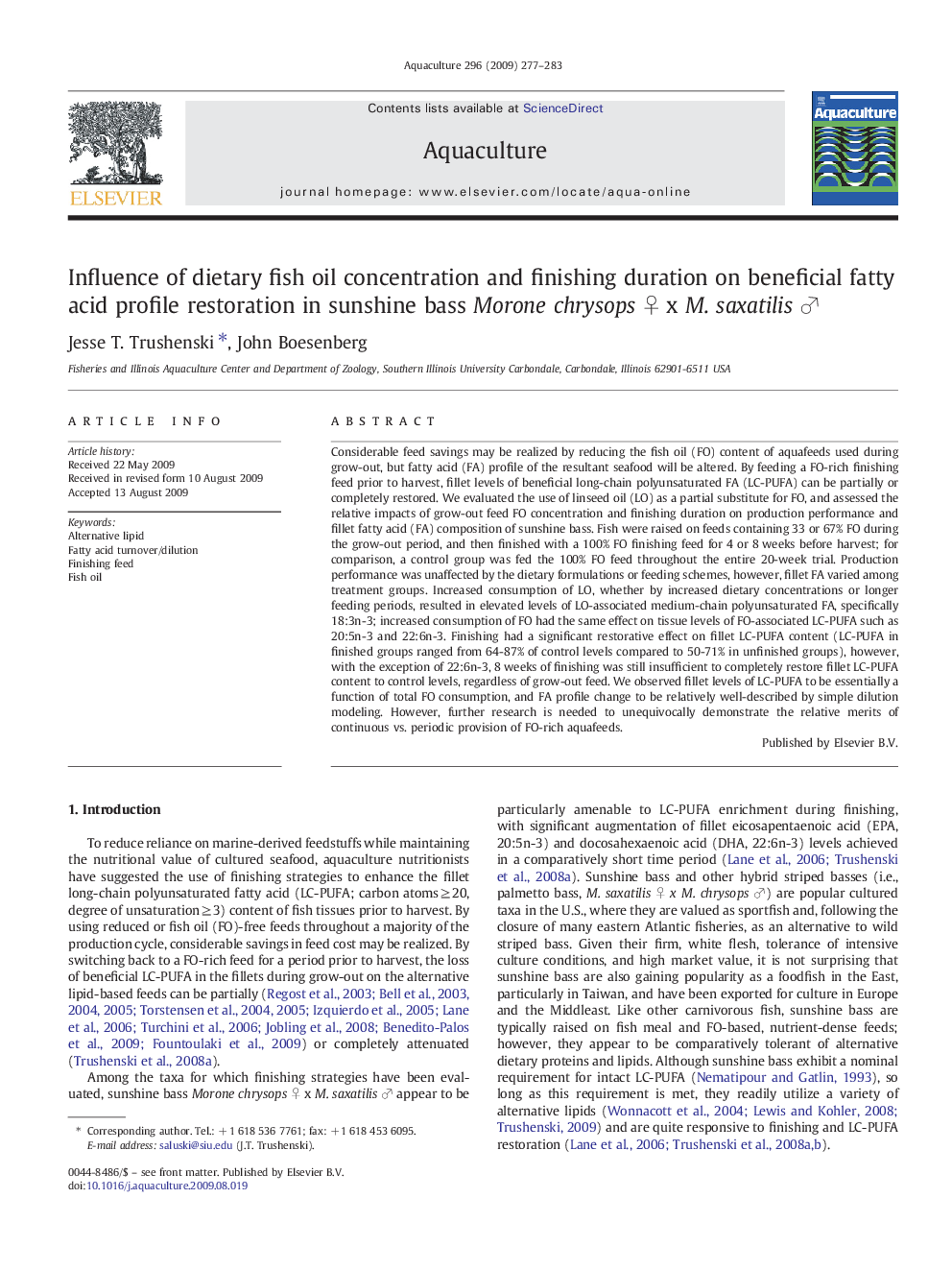| Article ID | Journal | Published Year | Pages | File Type |
|---|---|---|---|---|
| 2423858 | Aquaculture | 2009 | 7 Pages |
Considerable feed savings may be realized by reducing the fish oil (FO) content of aquafeeds used during grow-out, but fatty acid (FA) profile of the resultant seafood will be altered. By feeding a FO-rich finishing feed prior to harvest, fillet levels of beneficial long-chain polyunsaturated FA (LC-PUFA) can be partially or completely restored. We evaluated the use of linseed oil (LO) as a partial substitute for FO, and assessed the relative impacts of grow-out feed FO concentration and finishing duration on production performance and fillet fatty acid (FA) composition of sunshine bass. Fish were raised on feeds containing 33 or 67% FO during the grow-out period, and then finished with a 100% FO finishing feed for 4 or 8 weeks before harvest; for comparison, a control group was fed the 100% FO feed throughout the entire 20-week trial. Production performance was unaffected by the dietary formulations or feeding schemes, however, fillet FA varied among treatment groups. Increased consumption of LO, whether by increased dietary concentrations or longer feeding periods, resulted in elevated levels of LO-associated medium-chain polyunsaturated FA, specifically 18:3n-3; increased consumption of FO had the same effect on tissue levels of FO-associated LC-PUFA such as 20:5n-3 and 22:6n-3. Finishing had a significant restorative effect on fillet LC-PUFA content (LC-PUFA in finished groups ranged from 64-87% of control levels compared to 50-71% in unfinished groups), however, with the exception of 22:6n-3, 8 weeks of finishing was still insufficient to completely restore fillet LC-PUFA content to control levels, regardless of grow-out feed. We observed fillet levels of LC-PUFA to be essentially a function of total FO consumption, and FA profile change to be relatively well-described by simple dilution modeling. However, further research is needed to unequivocally demonstrate the relative merits of continuous vs. periodic provision of FO-rich aquafeeds.
